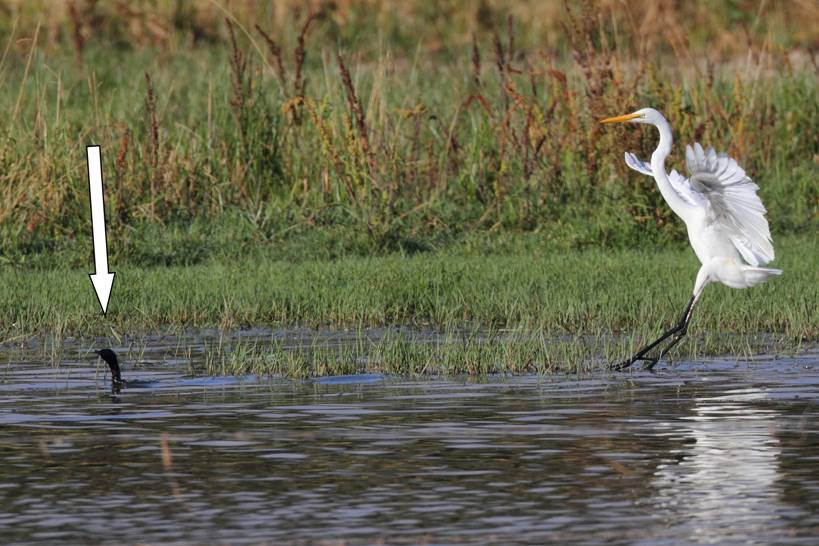John
- I don’t understand you to be suggesting that species A would do
something simply for the benefit of species B (setting aside humans and perhaps
their devoted dogs or other trained animals). Furthermore, we are not
looking for examples of species A doing something for its own benefit that also
benefits species B (the example of schools of tuna forcing bait-fish to
the surface where they are accessible to seabirds). Rather we are looking
for examples of species A and species B behaving in a way that benefits both
species. The honeyguide and honey badger would be an example.
Flocking
behaviour involving more than species might deserve study. I think it
quite likely that mixed flocks roost or feed together for self-protection.
There is a Wikipedia article under ‘Mixed-species foraging flock’
which suggests the ‘key benefits’ are ‘a reduction in
predation risk through increased vigilance’. Although
associated mainly with the tropics, we get such assemblages here in winter of
course. Steve Wilson thought the central species was the
Yellow-rumped Thornbill, and the flocks disintegrated when the YRTs broke off
to start nesting. While aerial hunters like the G Fantail might join
in for the flushed insects, that does not explain the participation of
surface-gleaners like pardalotes, tree-creepers, whistlers etc. MFFs
could be an example of mutual assistance in food-gathering.
Getting
back to the egret and cormorants, the egret certainly benefited from fish being
driven in, but I doubt the stealthy egret would drive them back out to shagland.
It’s possible that cormorants associate with egrets or other waterbirds
for the ‘flock-protection’ reason, but the way I see it the
cormorants are strongly food-driven and when in feeding mode just go where the fish
are. However the egret certainly knows the advantage of associating
with feeding cormorants. Just today I watched one make a series of rapid
short flights in a not very successful attempt to stay abreast of the
feeding cormorants (below).

From: John Layton
[
Sent: Wednesday, 5 January 2011 4:18 PM
To: Canberra Birds
Subject: [canberrabirds] Litle Pied Cormorant & Egret
Re Geoffrey’s picture;
cooperation between species fascinates me, whether it involves birds or
mammals. Some pundits claim it even occurs among plant life(!?). Anyhow we
can’t see what advantage the Little Pied Cormorant would get out of this;
or did the LPL drive the fish into the grassy shallows for its own benefit and
“Big Storky” muscled in?
John Layton.
Holt.

